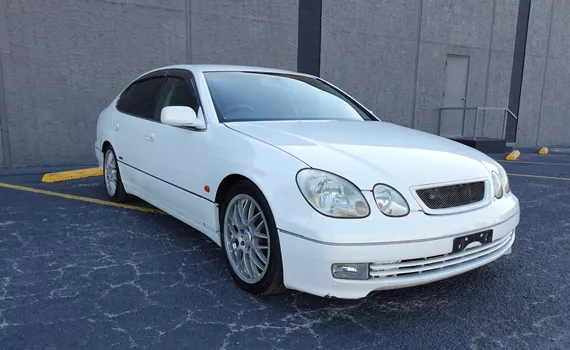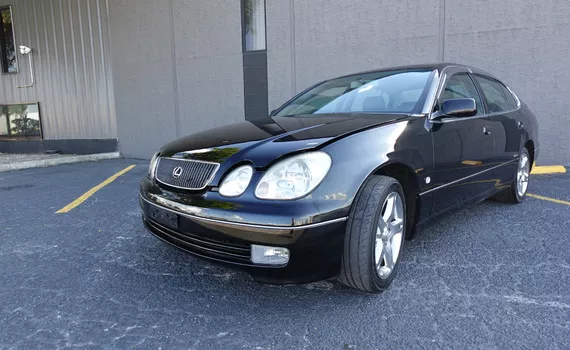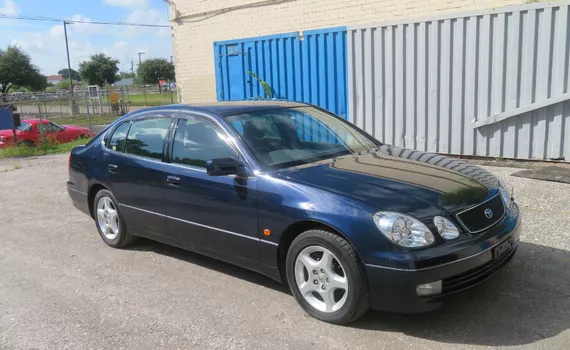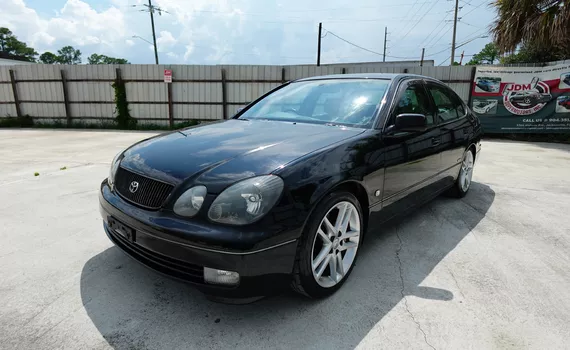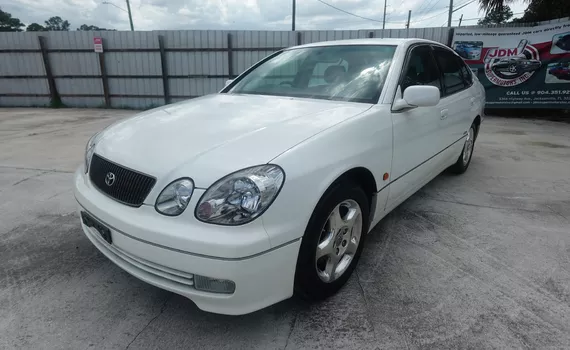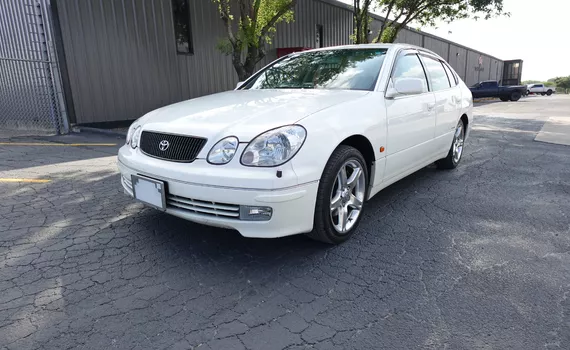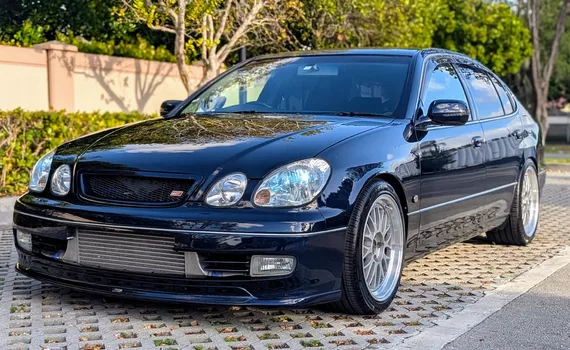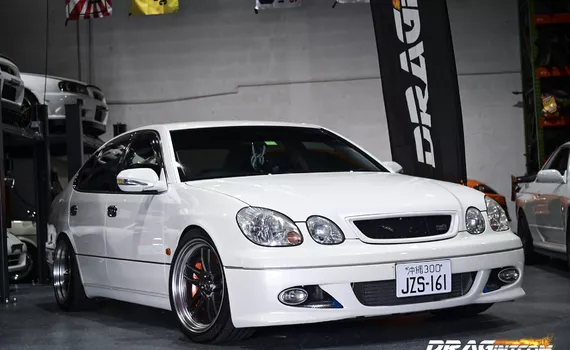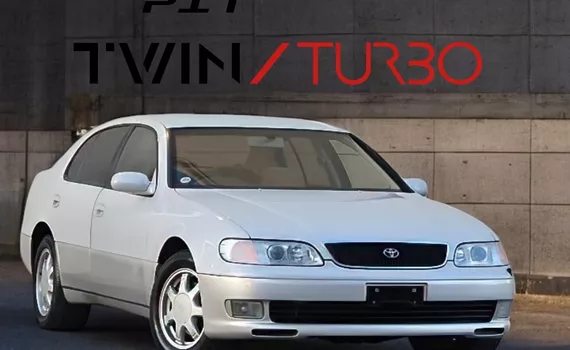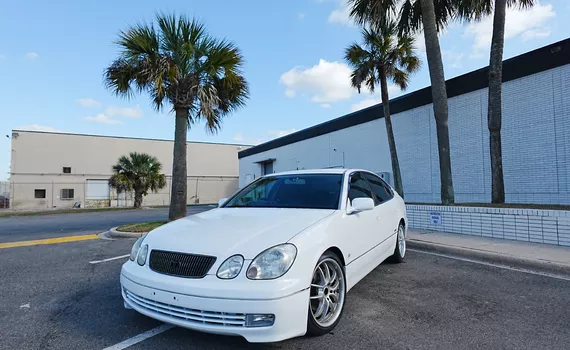Toyota Aristo For Sale
You might be wondering, hang on, this looks like a Lexus GS! That’s because it is. The Toyota Aristo is the name under which the Lexus GS was sold in Japan. However, the Aristo name was only seen for the first and second generations of the GS. The first generation was introduced in 1991, with a design penned by Italdesign Giugiaro. The Aristo was meant to be a luxury sedan positioned in the executive class. It featured the classic two-tone color option for the Japanese market as well, just like what the Lexus LS/Toyota Celsior would offer.
The Japanese market got three engines for the Aristo. The legendary 3.0-liter 2JZ made an appearance at first. It was offered in naturally aspirated 2JZ-GE and twin-turbocharged 2JZ-GTE forms. The latter was claimed to deliver up to 275 horsepower (remember that Japan had a maximum 276 horsepower Gentleman’s agreement among automakers at the time).
However, automakers used to regularly understate the power outputs of their high-performance variants, so perhaps the Aristo no doubt sent a few more horses to its rear wheels via its standard automatic gearbox. In 1992, the Japanese market would see a V8-powered, all-wheel drive, featuring a 4.0-liter naturally aspirated V8 with 249 horsepower, and all-wheel drive. This was not offered for the American market Lexus GS.
The second generation Aristo came in 1997, and would run for eight years. It continued to use the 2JZ engine in naturally aspirated and twin-turbocharged guises. The engine gained Toyota’s VVT-i system, which improved its torque curve. The turbocharged variant also received four-wheel steering as standard. This time, Japan wouldn’t get any V8 powertrains, while the American market Lexus GS now got the 4.0-liter unit, later upgraded to a 4.3-liter engine. The Aristo and Lexus GS received a mid-cycle facelift in 2001. While the GS entered the third generation in 2005, the Aristo nameplate disappeared.
If you have any questions, comments, or concerns about any JDM cars for sale on our website, please reach out to [email protected] and we'll respond back to you as soon as possible!
